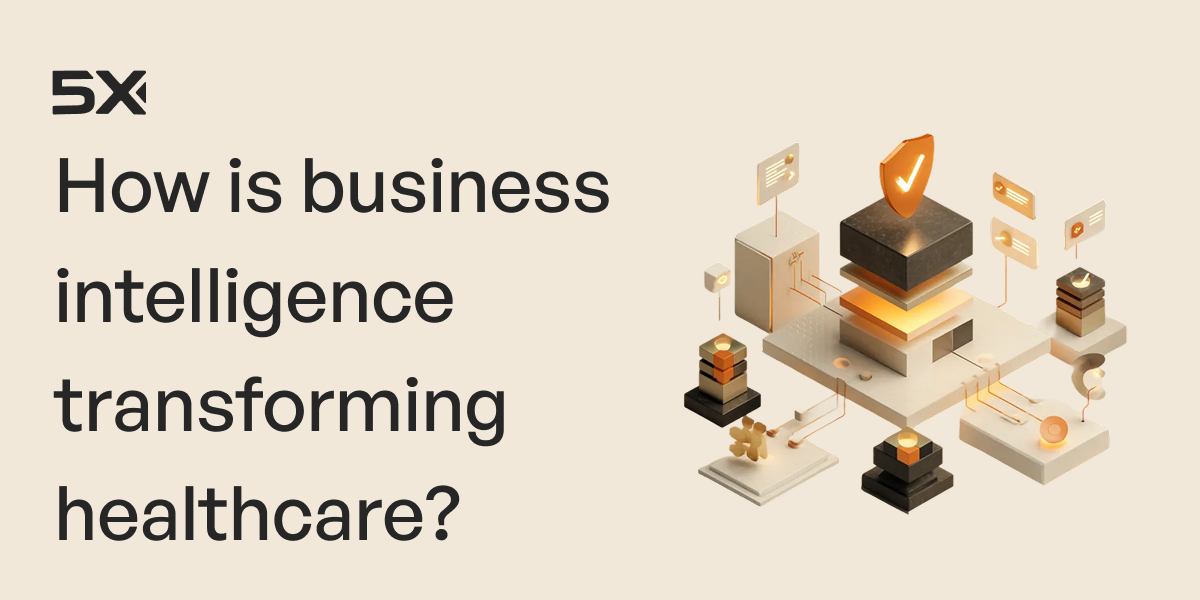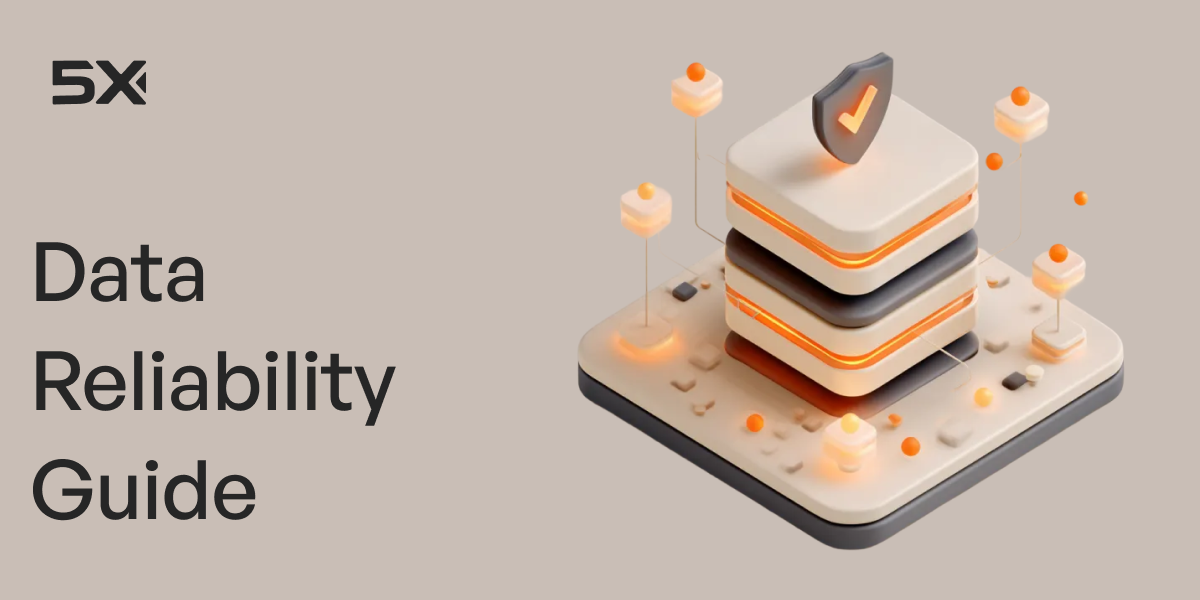Open source data platforms: benefits, risks, and how to make the right choice

.avif)

Table of Contents
TL; DR
- Open source data platforms let you avoid vendor lock-in and customize your stack
- You won’t pay license fees, and many report lower implementation costs (60% lower) and maintenance costs (46% lower) versus proprietary tools. However, “free” software still incurs hidden costs in integration, expertise, and upkeep
- Open source moves fast. A global community continuously improves these tools, often outpacing vendor roadmaps in adding new features and fixes
- Without a vendor, you’re on your own for support, security patches, and integration. Many organizations find DIY open source requires significant DevOps work and specialized talent, which can negate upfront savings
Imagine your team is debating how to build a new data platform. Someone says, “Let’s go open source. It’s free and we avoid lock-in!” It sounds perfect: no hefty vendor bills, complete flexibility, an army of developers online improving the code. But then the reality hits. Who will support these tools at 2 AM when a pipeline breaks? How much time will your engineers spend integrating half a dozen open-source components and fighting obscure bugs on GitHub threads? Will those initial savings evaporate into weeks of lost productivity?
This is the open source dilemma. On one hand, open source data platforms promise unmatched freedom: you can tweak the code, deploy anywhere, and escape the fear of a vendor pulling the rug out from under you. On the other hand, the DIY route can lead to hidden costs and risks that catch teams off-guard.
In this post, we’ll cut through the hype and fear to give you a balanced look at open source data platforms. You’ll learn the concrete benefits that make open source so popular and the less-advertised pitfalls that have tripped up many companies.
What are open source data platforms?
Open-source data platforms are essentially data infrastructure built using open-source software components. In plain terms, this means using freely available, community-developed tools to handle your data needs—everything from databases and processing engines to ETL pipelines and visualization.
The source code for these tools is openly published, so you can inspect it, modify it, and deploy it on your own hardware or cloud. Unlike proprietary (closed-source) platforms, which are provided by vendors for a license fee, open source platforms are “open” in both code and concept. They rely on communities rather than one company’s roadmap.
It’s important to understand that an open source data platform isn’t a single product, but rather a stack of technologies.
For example, a modern open source data platform might combine: an ingestion tool like Airbyte or Kafka for real-time data streams, a data warehouse or lake using Apache Iceberg or Hudi, a transformation tool like dbt, an orchestrator like Airflow, and a BI layer like Apache Superset.
Each of these components is open source, and together they form a complete platform handling ingestion, storage, processing, and analytics. The alternative would be buying a one-stop proprietary platform (say, Snowflake for warehouse + built-in SQL transforms + native BI) or a fully managed cloud stack.
6 Benefits of open source data platforms

Why are open source platforms so attractive, especially to data teams? A big driver is control. With open source, you’re not tied to one vendor’s ecosystem. You own your destiny; your data and code remain portable.
Open source data platforms have become immensely popular. 96% of businesses utilize open source in some capacity. The appeal goes beyond cost (we’ll get to that next); it’s also about innovation and community. Many cutting-edge data technologies (Hadoop, Spark, Kubernetes, etc.) originated as open source and became industry standards.
1. Lower upfront cost (and potentially lower TCO)
Open source software typically comes with no license fees. You can download and use the software freely. This can dramatically reduce your initial costs compared to buying enterprise software. For budget-constrained teams, the appeal is obvious.
2. Flexibility & customization
With open source, you get full control of the code. This means you can customize the tools to fit your exact business needs. If an open source data orchestration tool doesn’t support your special workflow, your engineers can modify or extend it.
3. No vendor lock-in
Freedom from lock-in is a major draw. With open source, your data is stored in open formats and your code is yours, so you’re never hostage to a single vendor’s platform. If you want to switch cloud providers or bring the system on-premises, you can. If the software vendor goes out of business, the code lives on.
4. Community and rapid innovation
Open source projects are developed by global communities of contributors. This model can lead to faster innovation cycles. New features, integrations, and improvements roll out frequently, without waiting for a vendor’s next quarterly release.
5. Transparency and trust
By nature of being open, these platforms offer full transparency. You can audit the code for security or quality. There are no black boxes, which is crucial in data platforms where trust in data processing is key. Open code means you can verify exactly how data is handled, which algorithms are used, and how queries are executed.
6. Compatibility and ecosystem
Open source tools often adhere to open standards and interfaces, which makes integration easier. You can mix and match best-of-breed components. For example, you might use a proprietary BI tool on top of an open source data warehouse; they’ll likely connect via standard SQL/ODBC/JDBC. Or use a cloud storage service with an open source processing engine. Open platforms give you the optionality to plug into a wider ecosystem.
7 Hidden costs and risks of open source data platforms

Open source is not all sunshine and rainbows; there are very real challenges that can turn your dream DIY platform into a nightmare. Here are the major downsides and risks to be aware of:
1. Operational burden and hidden costs
Perhaps the biggest catch is that “free” software still requires work (and workers) to run. You save on licenses, but you pay in time, labor, and complexity. There’s no vendor assembling the pieces for you or handling upgrades – it’s on your team’s plate.
If you deploy five open-source components to build your platform, you now have to configure them to talk to each other, tune each one, manage their compatibility, and continuously patch and update them. This is effectively an engineering project in itself.
Many companies underestimate this burden.
At WeWork, we had a 100+ data org and out of that 20 people were managing our data platform. That was over a 4m/year cost center on building a platform that wasn’t differentiated in any way from the next company.
~ Tarush Aggarwal, CEO, 5X
Friends Don’t Let Friends Build a Data Platform
2. Lack of dedicated support
With a commercial platform, if something breaks, you call the vendor’s support line and expect a fix or guidance (especially if you pay for enterprise support). With pure open source, you typically do not have that luxury. Your support channels are community forums, Slack groups, maybe Stack Overflow. There’s no guaranteed SLA for responses.
This is why many open source projects spawn commercial versions or support contracts (think Red Hat for Linux, or vendors like Cloudera for Hadoop historically). Those add cost, effectively eroding the free benefit, but they exist because support is indispensable.
If you go fully open source without such a safety net, plan for your engineering team to be 24/7 support. This can lead to burnout and operational risk if not staffed properly.
3. Integration complexity
A modern data platform has many moving parts (ingestion, storage, processing, analytics, etc.). If you assemble these from open source projects, you become the system integrator. Getting all components to work together seamlessly is non-trivial. Compatibility issues can arise between versions of different tools.
For example, your open source workflow orchestrator might not natively support your new data lake format, so you build custom glue code. Upgrading one component could break others. In contrast, a unified commercial platform is pre-integrated by the vendor.
The fragmentation of the open source ecosystem means you must vet and choose among multiple options for each layer, then ensure they mesh.
Integration complexity also extends to user experience. Proprietary platforms often have polished UIs and smoother end-to-end workflows. Open source tools, built independently, can feel disjointed.
While power users don’t mind rough edges, casual business users might struggle without the refinements that commercial products focus on. This can impact adoption of your platform internally.
Also read: Centralized vs Decentralized Data Teams: What Do Top Data Leaders Prefer?
4. Steeper learning curve and talent needs
Each open source tool comes with its own paradigms and quirks. To effectively use (and troubleshoot) an open source data platform, your team needs solid expertise in all its components. That often means hiring talent with specific skills (e.g., a Kafka expert, a Spark expert) or investing heavily in training.
There’s a skills shortage in many open source areas; experienced data engineers and SREs who can run complex open source systems are in high demand (and command high salaries).
If your existing team is small or junior, taking on a full open source platform could overwhelm them. The risk is that the platform’s potential isn’t realized because the team is learning on the fly. And if a key expert leaves, you might have a knowledge gap that’s hard to fill.
In fact, even as companies embraced open source AI, they cited “time to value” as slower compared to proprietary solutions, because getting up to speed and implementing open tools took longer than using ready-made cloud APIs.
5. Security and compliance risks
Open source software is open to all, including attackers who can inspect code for vulnerabilities. Keeping an open source data platform secure requires vigilance. You must monitor for security patches released by the community and apply them promptly (there’s no vendor auto-update). If you slack on updates, you could be running components with known exploits.
For instance, the infamous Log4j vulnerability in 2021 affected countless open source and commercial systems; those relying on community patches had to scramble to update.
Additionally, certain open source projects may not undergo the rigorous security hardening that enterprise software does. You need to vet them for your security standards. There’s also the matter of compliance (HIPAA, GDPR, etc.). Proprietary platforms often provide compliance certifications and features out-of-the-box. With open source, ensuring compliance (encryption, access audits, data residency controls) is your responsibility to configure and maintain.
6. Uncertain longevity and support
Open source projects can sometimes lose momentum or get forked into competing versions. If a project maintainer or sponsor company loses interest, you could be left with software that doesn’t advance or receive bug fixes. While major projects are likely to survive (due to large communities or Linux Foundation stewardship), smaller niche tools carry some risk.
In contrast, a vendor product usually comes with a roadmap and contractual obligations for support (though vendors can also go under or deprecate products, to be fair).
Also, when something goes wrong with an open source tool, there’s no guaranteed fix timeline. You might file an issue on GitHub and wait weeks, or you might have to patch the code yourself. For businesses used to the predictability of vendor support, this can be unnerving.
7. Performance tuning and scaling challenges
A proprietary platform is often optimized by the vendor for certain workloads and comes with expert guidance for scaling. With open source, achieving high performance at scale is again on your team. It’s possible that an open source database works fine on small data, but to scale to terabytes with sub-second query times, you’ll need to do serious tuning (or even code contributions).
If your usage grows, you might hit limits or need to architect around issues. Proprietary solutions might have baked-in scaling (like a serverless warehouse that auto-scales) whereas open tools could require cluster management and careful capacity planning by you.
All in all, the risks of open source data platforms boil down to operational complexity and uncertainty. You gain freedom but lose the safety net. Many organizations start an open source journey enticed by the benefits, only to encounter these challenges and either hire external help or revert to a managed solution. In fact, there’s a growing trend of “managed open source” services precisely because of these difficulties.
Open source vs. commercial platforms: making the right choice
So, given the pros and cons, how do you decide between an open source data platform and a commercial (proprietary) platform? The answer depends on your business priorities, resources, and risk tolerance. Let’s compare the two approaches across key dimensions and identify where each makes sense:
To make the right choice, ask the right questions up front.
- Is the platform built on true open standards?
- Can you fully export your data and transformations?
- Is that “free” open source tool going to require expensive engineers or cloud instances?
- Is that “all-in-one” vendor going to charge exponentially as data scales?
💡Pro tip: If you’re torn, consider starting with an open-source-friendly managed platform. It’s easier to take on more open source control later than to retreat from a full DIY approach. This gives you quick value and a safety net, while keeping the door open for more autonomy if needed.
How to get open source benefits without the burdens
Open source data platforms offer a compelling promise of flexibility, community-powered innovation, and cost savings, essentially giving you the keys to your data kingdom. But with great power comes great responsibility: you must be ready to handle the operational demands and risks.
Commercial platforms, conversely, can accelerate your journey and provide peace of mind at the expense of some control and higher direct costs. There’s no one “right” answer for everyone, but armed with the insights from this deep dive, you can make an informed choice.
If you’re leaning towards open source but wary of the pitfalls, consider solutions that blend the two worlds.
5X is an open-standards-based platform that eliminates the headache of managing open source tools yourself. It’s built on proven open-source foundations but delivered with enterprise-grade reliability and support.
Essentially, 5X lets you enjoy open source benefits without the burdens. You get anti-lock-in architecture (your data and dbt models remain portable) and best-of-breed open tools, while 5X handles the heavy lifting: infrastructure, upgrades, monitoring, SLAs.
As a result, teams skip the 6+ month build and go straight to solving business problems, with the confidence that the platform won’t crumble in the night. This approach has led organizations to save hundreds of engineering hours per month and cut total costs by 30-50% versus DIY.
FAQs
Are open source data platforms really free?

What are the biggest risks of using open source data platforms?

Should I build my entire data stack with open source tools?

Building a data platform doesn’t have to be hectic. Spending over four months and 20% dev time just to set up your data platform is ridiculous. Make 5X your data partner with faster setups, lower upfront costs, and 0% dev time. Let your data engineering team focus on actioning insights, not building infrastructure ;)
Book a free consultationHere are some next steps you can take:
- Want to see it in action? Request a free demo.
- Want more guidance on using Preset via 5X? Explore our Help Docs.
- Ready to consolidate your data pipeline? Chat with us now.
Get notified when a new article is released
Cut hidden costs. Keep open source freedom.
Cut hidden costs. Keep open source freedom.

How retail leaders unlock hidden profits and 10% margins
Retailers are sitting on untapped profit opportunities—through pricing, inventory, and procurement. Find out how to uncover these hidden gains in our free webinar.
Save your spot






%201.svg)









